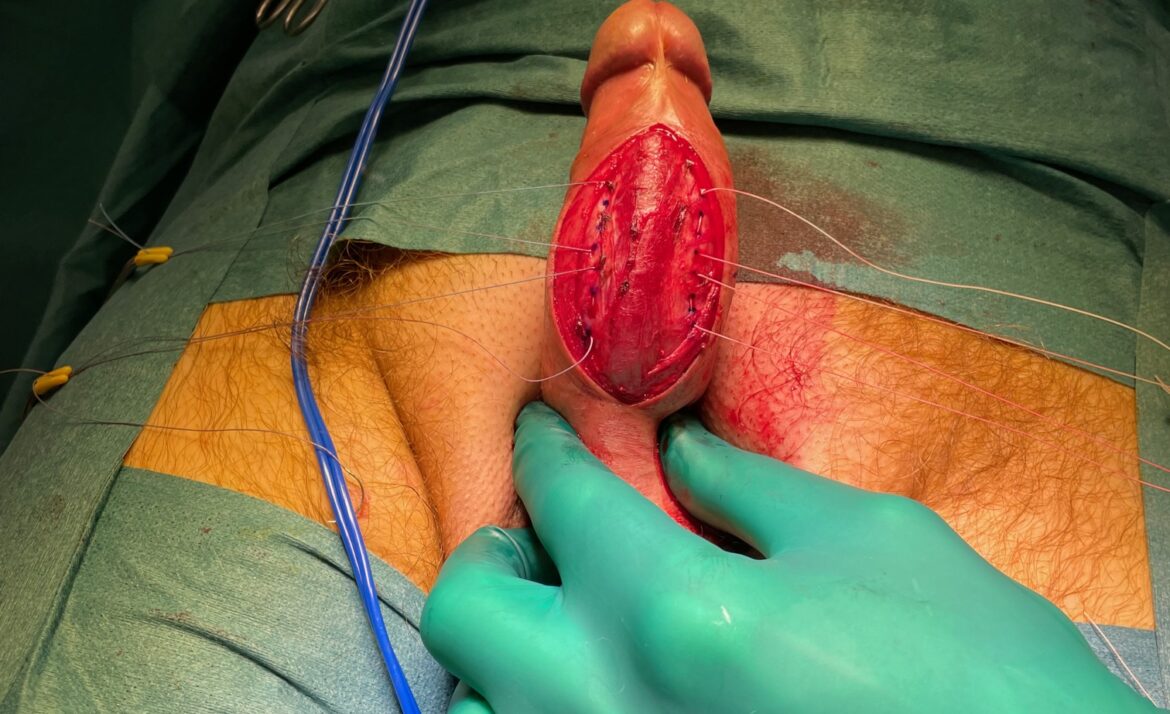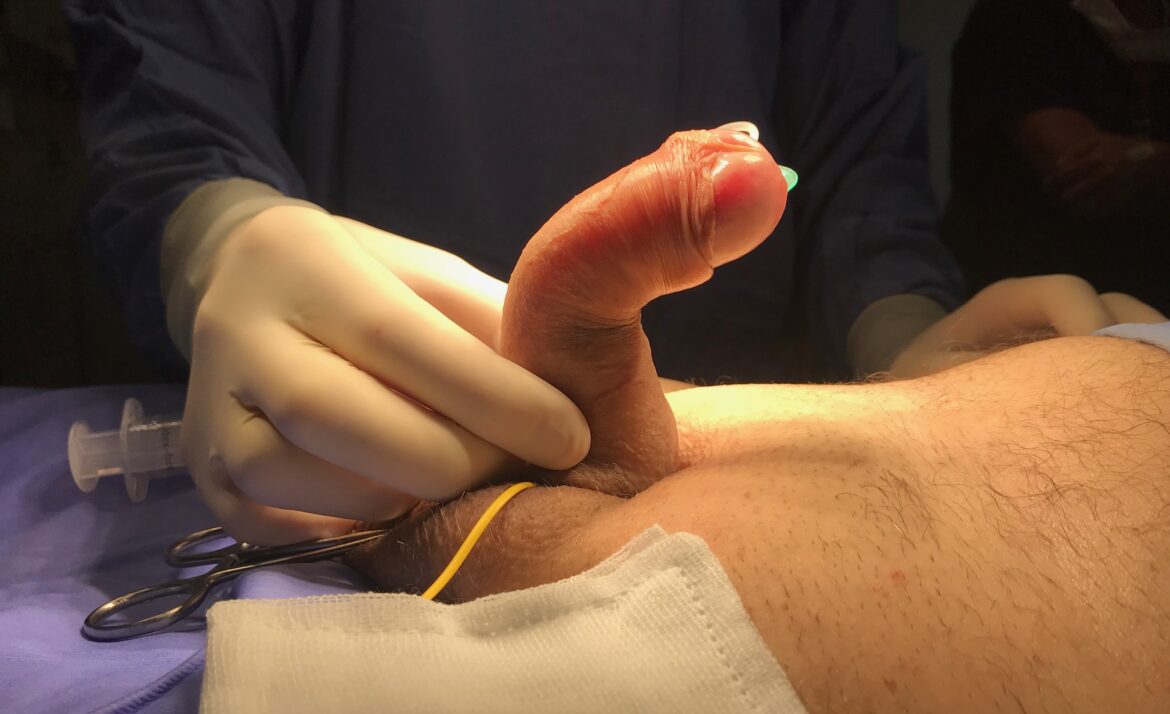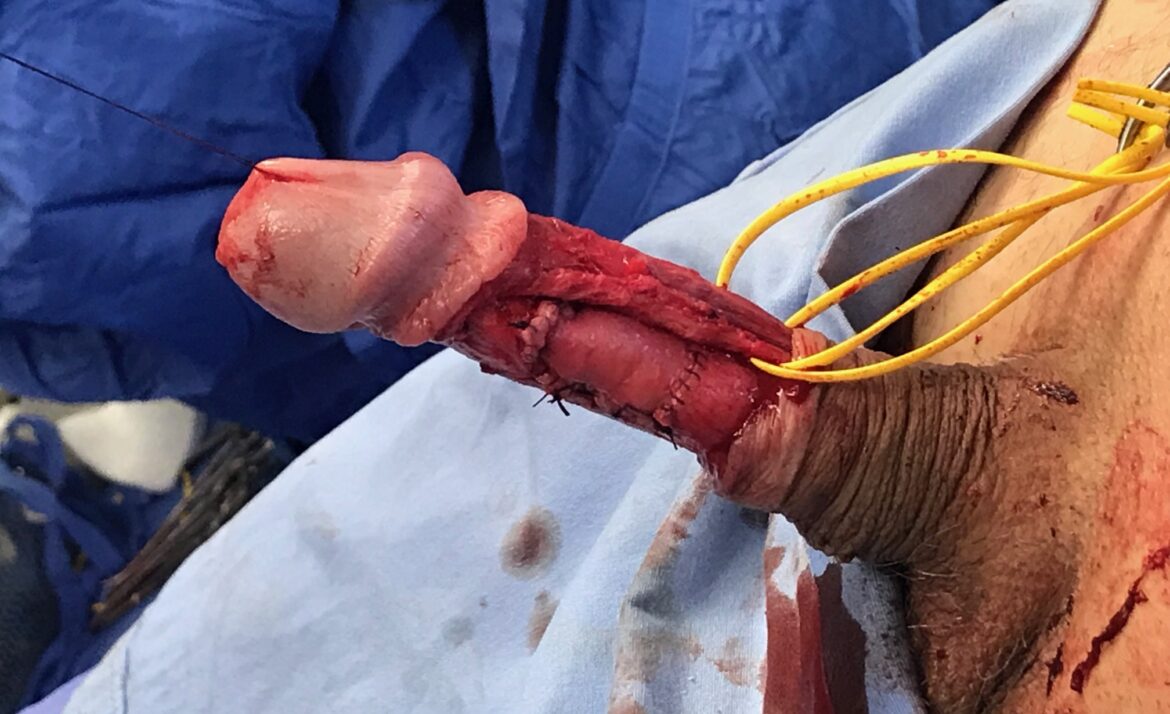Peyronie’s Disease is a common condition affecting middle-aged men.
Key points:
- Peyronie’s Disease (PD) often results in curvature of the penis – this can make sexual activity difficult (or even impossible).
- The exact cause of PD is unknown.
- Some cases of PD occur as a result of penile injury but, in most patients, there is no obvious trigger for the condition to develop.
- After an early, painful stage, the disease usually passes into a chronic, stable phase.
- Surgery is often needed if the degree of curvature makes it uncomfortable, difficult, or impossible to have sex.
- Currently, no treatment for Peyronie’s disease can give you back the penis you had before the disease.
What is PD?
Peyronie’s is thought to affect approximately 1 in every 16 men (6%), though most urologists suspect that it is under-reported and may affect as many as 1 in 10 men (10%). It can occur at any age, although it is seen mostly in middle-aged men.
PD is characterized by a hard lump (plaque) in the erectile tissue of the penis. This begins as a localised inflammation, which may then mature into a hardened scar. The scar is inelastic (stiff) and stops the penis from stretching with erections, leading to the development of curvature on erection. It is not a condition you can “catch” from sexual activity, and you cannot pass it on. It is not a form of cancer, nor does it become malignant over time.
How does PD develop?
The inside of the penis is made up of two erectile cylinders (corpora cavernosa). The inner membrane of each cylinder is lined by a sheath of elastic fibers which also attaches to a septum between the two chambers. If the penis is abnormally squeezed or bent, the area where the septum attaches to the elastic fibers may over-stretch. This can lead to injury of the lining and rupture of the small blood vessels in this area. In older men, reduced elasticity of tissue, narrowing of arteries, and diabetes may all increase the likelihood of scarring after an injury to the penis.
These areas of damage may then heal slowly and in an abnormal fashion. In most patients, the healing process will take less than 12 months and the scar tissue does not advance beyond its early inflammatory phase. In more persistent cases, the scar tissue forms a plaque, which may even contain hard areas of calcification.
Although injury explains some cases of Peyronie’s disease, it does not explain why most plaques develop slowly with no apparent injury. Nor does it explain why some plaques disappear quickly.
PD may have an association with high blood pressure, diabetes, raised cholesterol levels, ischaemic heart disease and arteriosclerosis as well as with certain drugs (beta‐blockers, anti‐ulcer agents, antidepressants, and antihistamines).
About 1 in 5 men (20%) with Peyronie’s disease also develop fibrosis (scarring) in other elastic tissues of the body (e.g. the palm of the hand or the sole of the foot). The commonest example is a condition known as Dupuytren’s contracture of the hand.
In some men with Peyronie’s disease, there is a clear family history of the condition, suggesting that it may be inherited to some extent.
PD usually has 2 distinct stages
A painful, inflammatory phase
This lasts for about six to twelve months. There is no way to tell exactly when the acute phase has ended, but easing of the pain usually heralds it.
A chronic or stable phase
This phase occurs around 6 months after the pain has ceased. During this time, no new changes should occur to the shape of the penis or extent of curvature (bending).
PD can cause the following problems
Treatment: Non-surgical
Scientific studies have shown that injecting the plaque with specific drugs or compounds may help for Peyronie’s Disease. These intralesional injections may decrease pain and/or curvature which is associated with PD. Injections are given in the clinic using some local anaesthesia. It is a non-invasive option.
Intralesional colagenase
Xiaflex™ has shown the best results but it is not available in New Zealand at this stage.
Intralesional calcium channel blockers
Studies have yielded mixed results but this may be of benefit in some patients. It usually involves a weekly injection for 12 weeks.
Treatment: Surgical
The aim of surgery is to get the penis functionally straight penis (with less than 20° of curvature). This can be achieved by shortening the longer side of the penis (plication) or by lengthening the shorter side by cutting into the plaque and filling the gap with a graft (plaque incision and grafting).
The choice of procedure depends on:
- The degree of penile curvature
- Any additional shape change to the penis (such as an hour-glass indentation in the contour)
- The total penile length
- The quality of your erections
Plication of the corpora cavernosa
Plication procedures are best for patients with good erectile function and curvatures of less than 60°. During a plication procedure, the curvature is counteracted by “bunching up” the side of the penis opposite to the plaque. There are many different plication techniques, but the most commonly used one is known as a Nesbit’s procedure. Non-absorbing stitches are used for plication; you may be able to feel them under the skin of your penis afterward. Plication procedures always cause a degree of penile shortening but they have less impact on erections and penile sensation than plaque incision and grafting.
Plaque incision and grafting
Plaque incision and grafting is used for men with severe curvature (more than 60°) and who still have good quality erections. During the procedure an incision is made into the plaque to release the scarred area. The gap then needs to be patched – pre-packaged, off-the-shelf grafts are used for this purpose and stitched in place.
To get to the plaque on the penis, either the penile nerves (for an upward bend) or the urethra (for a downward bend) need to be lifted from the body of your penis during the operation; these are placed back into their correct position at the end of the procedure. Plaque incision and grafting procedures are more likely to affect erections and penile sensation than a plication operation, but will cause less penile shortening.
Prof Zarrabi has experience in various surgical approaches for treating Peyronies Disease. Below are intra-operative photos from surgeries that he personally performed.
(Click on images to enlarge)




